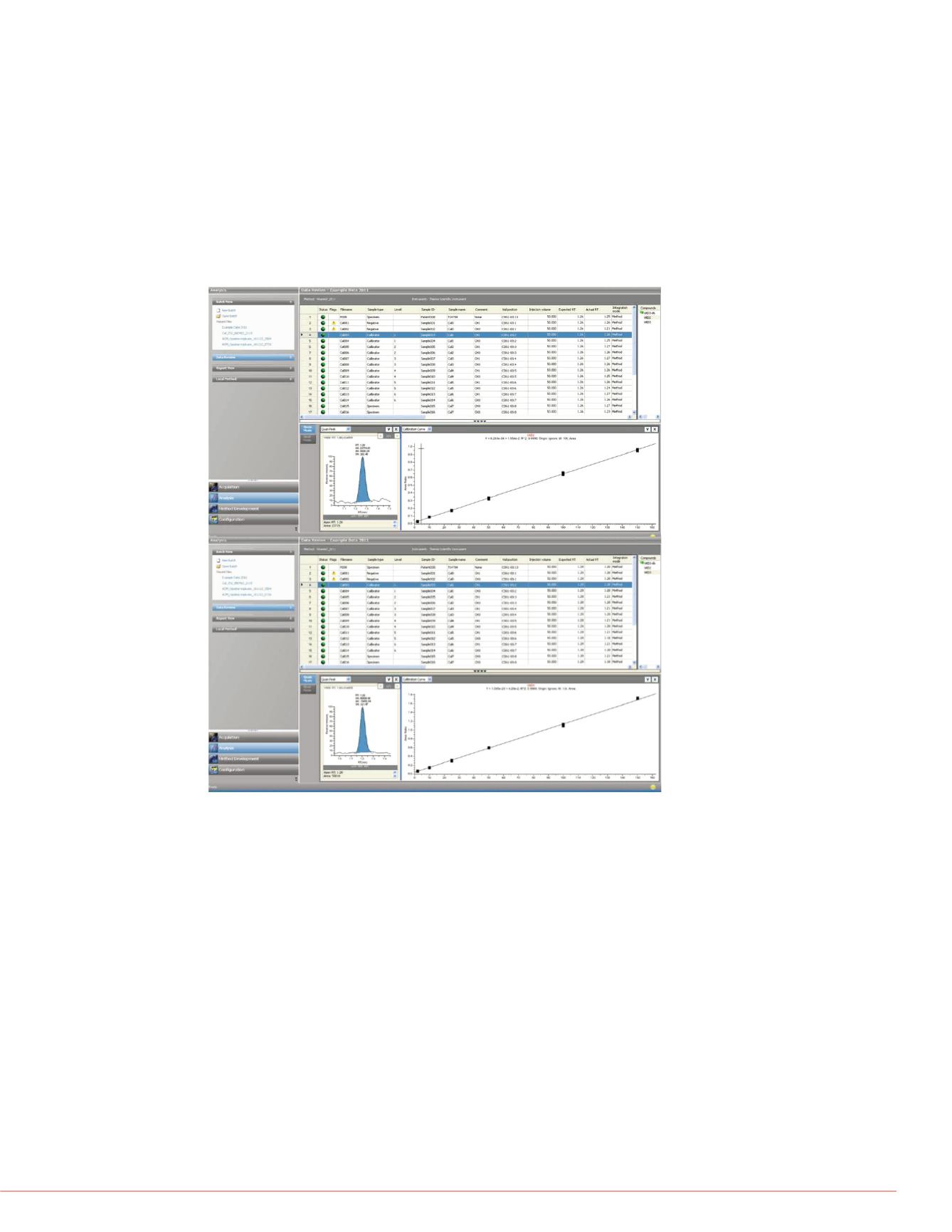

5
Thermo Scienti c Poster Note
•
PN63780_E 03/13S
Conclusion
Far too often LC/MS methods and instru
criteria Clinical Research Labs require fo
samples being injected on the system an
processed tax the instrumentation and c
developed proved a valuable whole-syst
consistent performance of the Prelude S
purpose-designed testing facilitates the i
standards for LC-MS systems used for cl
system suitability test allows vendors an
performance under controlled conditions
circumstances and has proven to be a va
to installation of Prelude SPLC Systems.
calibration and QC results for ISDs that
operating conditions at two different clini
Acknowledgements
The authors thank the following who host
Dr. William Clarke & Autumn Breaud of J
Dr. Mark Kellogg & Dr Roy Peake of Bost
Dr. Sihe Wang & Jessica Gabler of the Cl
ance
criteria would be the best
mmon problems with
est has four compounds
te problems that might exist
tention time and peak
detect any problems that
n
,
as their RT shifts with
ly susceptible to
h or made precisely as
powerful diagnostic tool.
all four compounds to
or less with no internal
re 8 shows typical
MassCheck is a trade mark of ChromSystems Instru
All other trademarks are the property of Thermo Fishe
This information is not intended to encourage use of t
intellectual property rights of others.
e Prelude SPLC System
FIGURE 10. Quantitative Results Imm
System was Suitable for well-known Clinical Research Methods
In order to asses the scope of applications for the Prelude SPLC system, popular LC-
MS methods used in clinical research were considered. Methods for steroids, pain
management drugs, immunosuppressant drugs and 25-OH-Vitamin D2 and D3, were
developed and evaluated. We monitored linearity within the experimental range, inter-
and intra-day reproducibility, long-term system stability, solvent consumption as
compared to other platforms, and other relevant parameters. Please see other posters
for more details on some of these methods. Figure 9 shows typical quantitative results
for the Vitamin D compounds - excellent reproducibility for peak areas and retention
times while achieving the desired sensitivity and linearity.
Even for Immunosuppressant Drug applications
Measuring Everolimus, Sirolimus, Tacrolimus and Cyclosporin A in whole-blood
samples presents many challenges, from sample preparation to detection of each
analyte and internal standard by the MS/MS system. To evaluate the Prelude SPLC
system’s ability to handle such an application, ChromSystems® multilevel calibrators
and MassCheck® whole blood controls were processed using D
12
-Cyclosporin A
(Alsachim, Illkirch-Graffenstaden, France) as the internal standard (IS) for Cyclosporin
A and Tacrolimus-
13
CD
2
(Toronto Research Chemicals, Canada) as the IS for
Everolimus, Sirolimus and Tacrolimus. Typical RSDs of peak areas for the two IS
compounds were less than 12%.Typical quantitative results, collected over a span of
30 days from three systems in different locations - Cleveland, Baltimore and Boston,
are shown in Figure 9.
tention Time %CVs from 3
otype systems.
FIGURE 9. Quantitative Results – 25-OH-Vitamin D2 and D3



















